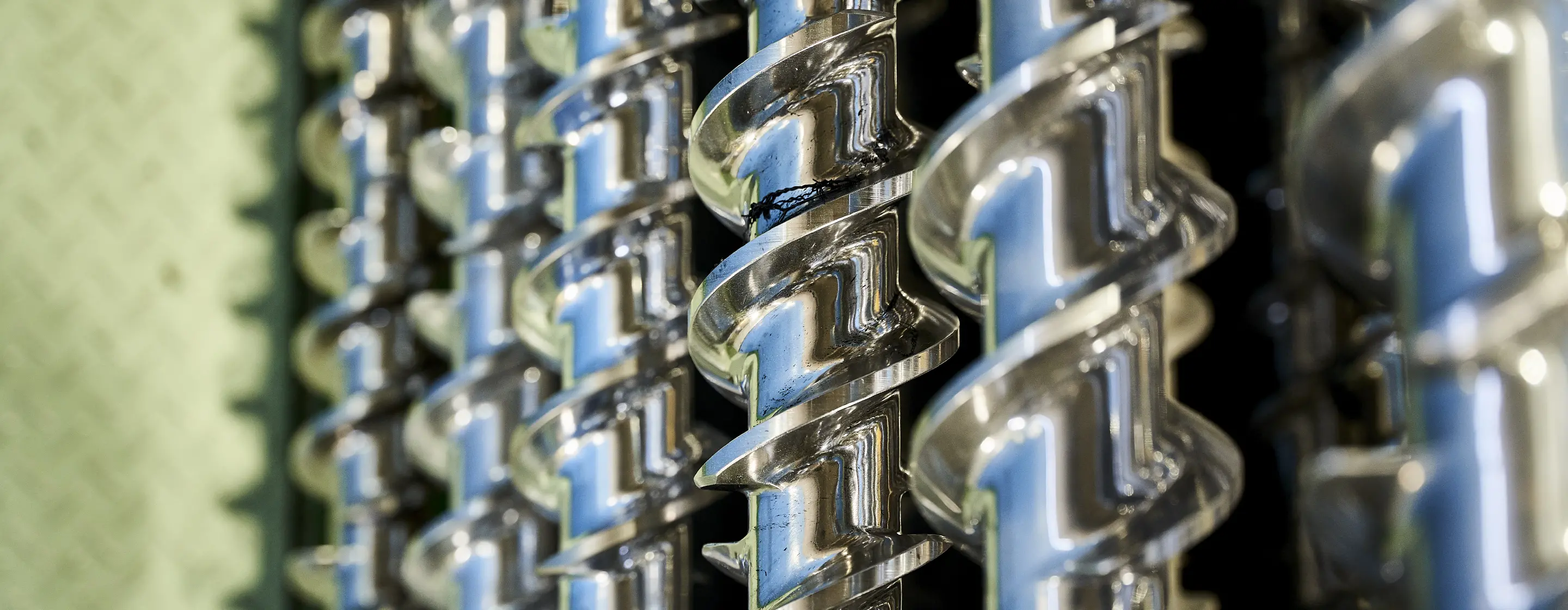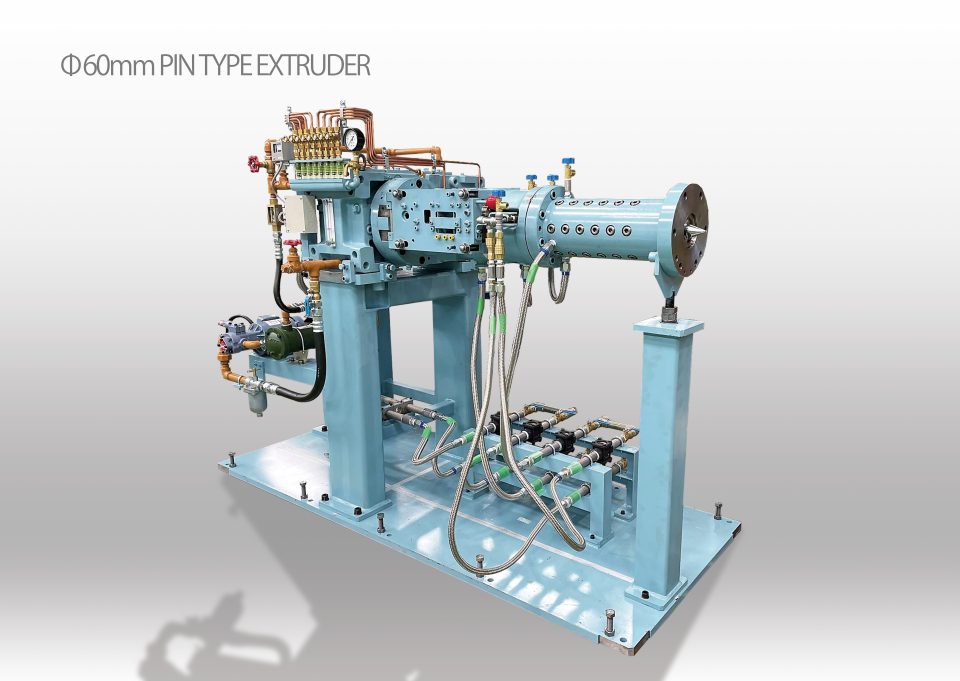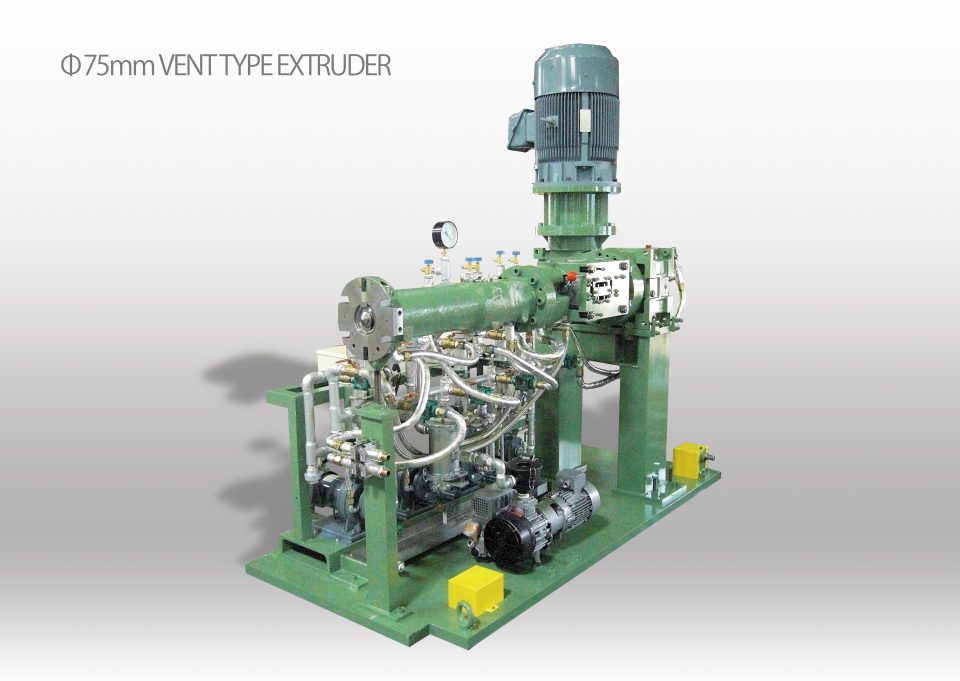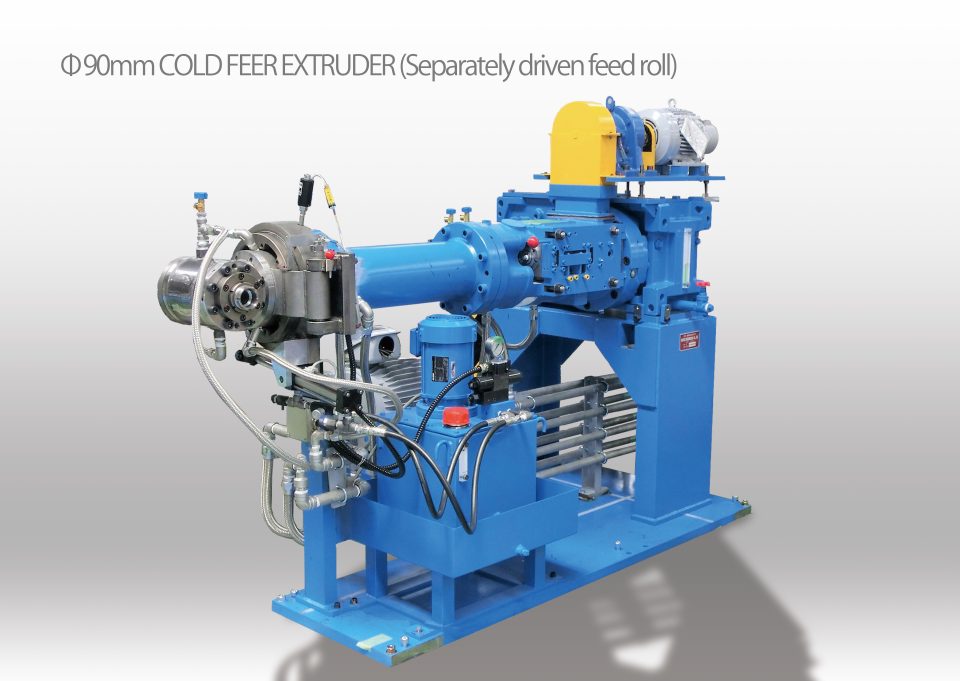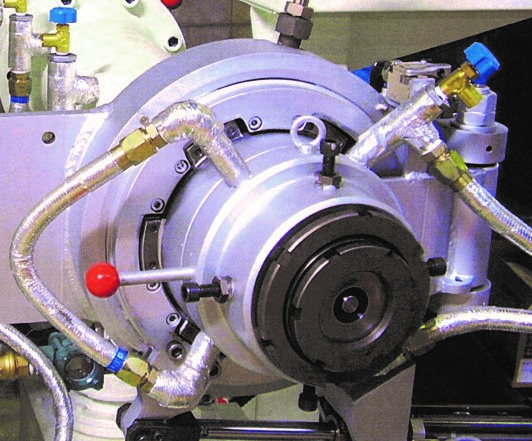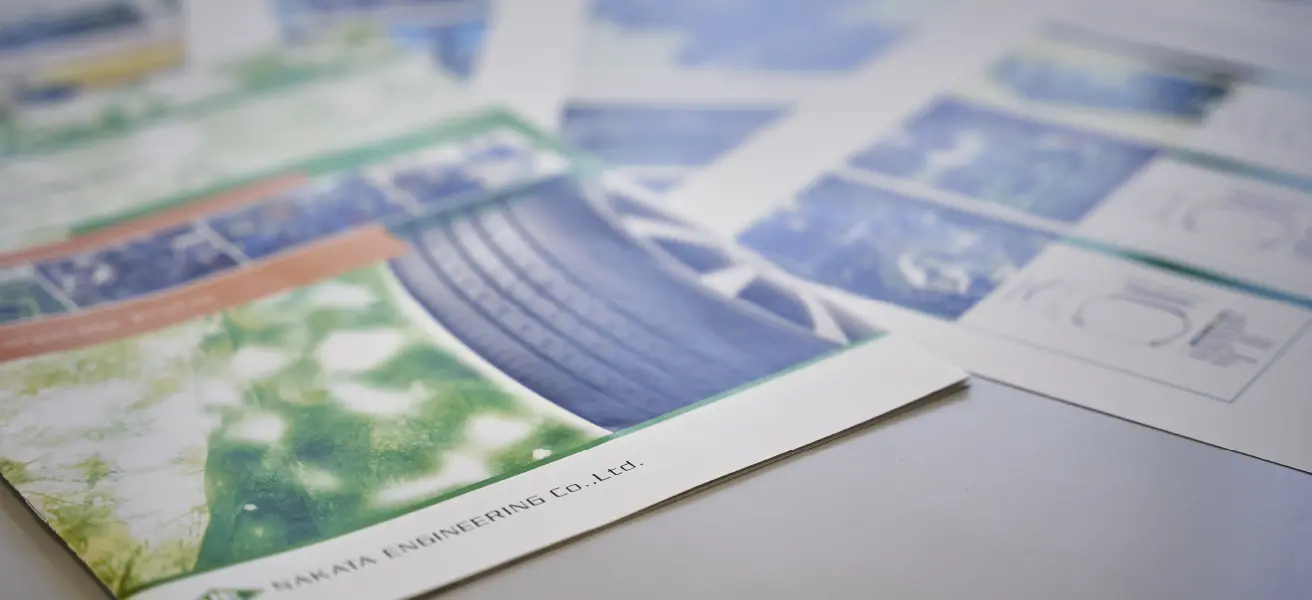COLD FEED TYPE EXTRUDERS
-2-scaled.jpg)
-2-scaled.jpg)
Overview
A mechanism of extruder works in this way: material rubber is charged at a root area of an elongate screw engaged in a cylindrical barrel, then plasticized by heat, kneaded and mixed while being transferred by screw rotation, and then pressurized against mouthpiece at the screw tip area and pushed out through it with a designed profile continuously.
We, Nakata Engineering, have manufactured the extruders majorly as a long-established maker of the rubber processing machinery and kept studying for further developments. We have provided to the market a “hot feed” extruder traditionally, then developed a “cold feed” type which can process material rubber at an ambient temperature, a “vent” type which can degas the trapped air in the processing rubber, and a “pin” type which realized higher output, in our long history. We are proud of our contribution to the advancement of the extrusion technology.
COLD FEED EXTRUDERS
- Cold feed type extruders are constructed with specially designed screws best suited for cold feeding. The primary components of each machine are an extruder unit, a temperature control unit, a drive motor, and a temperature control panel.
- 1) Ordinary temperature rubber in the form of tapes, pellets or slabs can be fed directly to the extruder, with no preheating in warming mills before the extruder.
- 2) A range of screws is available for a wide variety of compound and extrusion applications.
- 3) During the extrusion process, uniform temperature and plasticity is applied to the rubber compound to provide accuracy in shape and size of extruded components.
- 4) Rubber feed to the extruder can be automatic, reducing the number of operating personnel.
- 5) An automatic temperature control unit, with a circulating pump, controls cylinder temperature to within ±1 degree C, so the shape and size of the extruded products are uniform.
Specification

Related products
-
The most suitable equipment to produce rubber prof……
-
The most suitable equipment to produce rubber prof……
-
Variety of Our “Extruder” Peripheral Equipment
EXTRUDER EXCLUSIVE/PERIPHERAL EQUIPMENTS & DEV……
-
EXTRUDER EXCLUSIVE/PERIPHERAL EQUIPMENTS & DEV……

